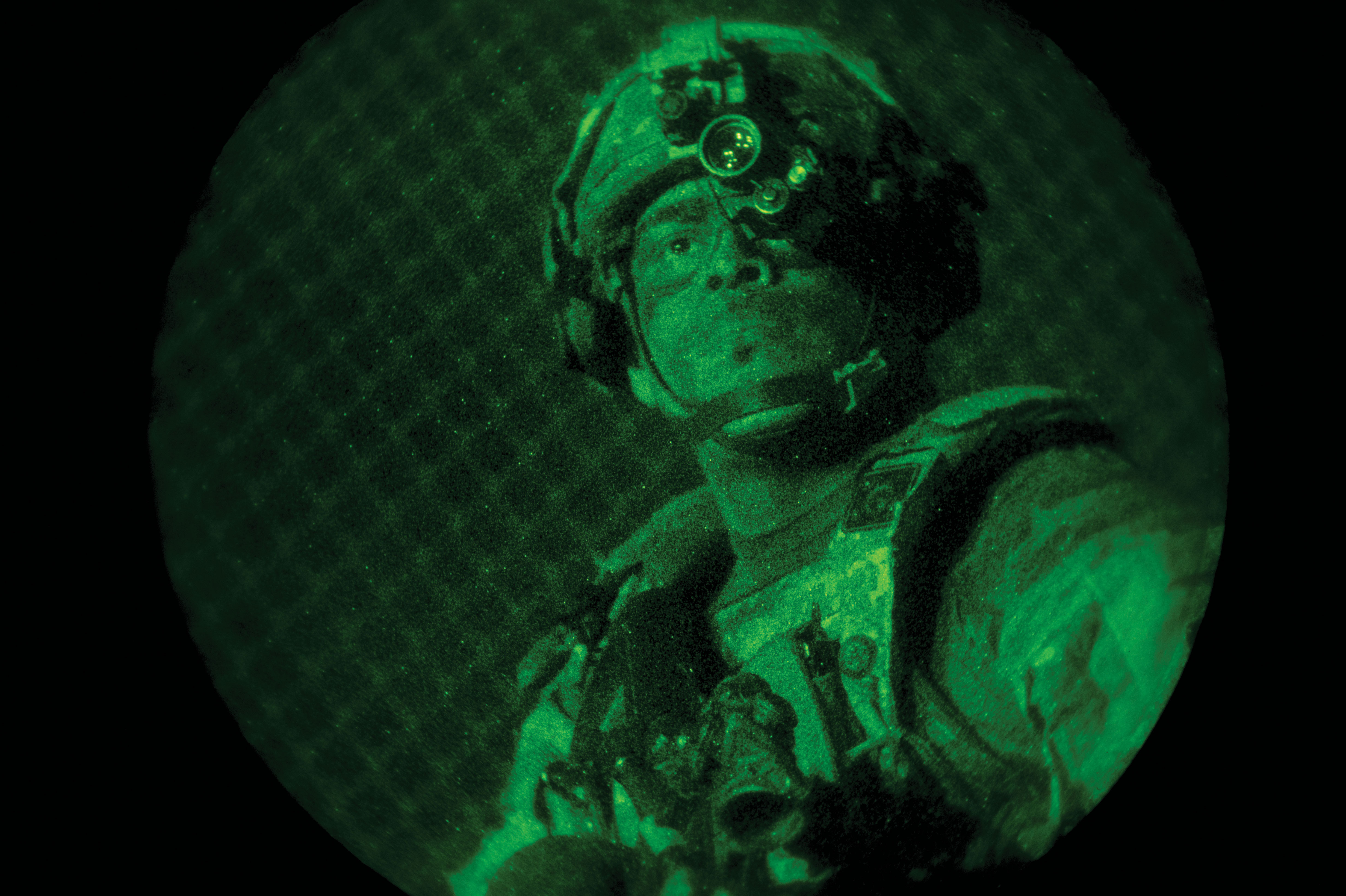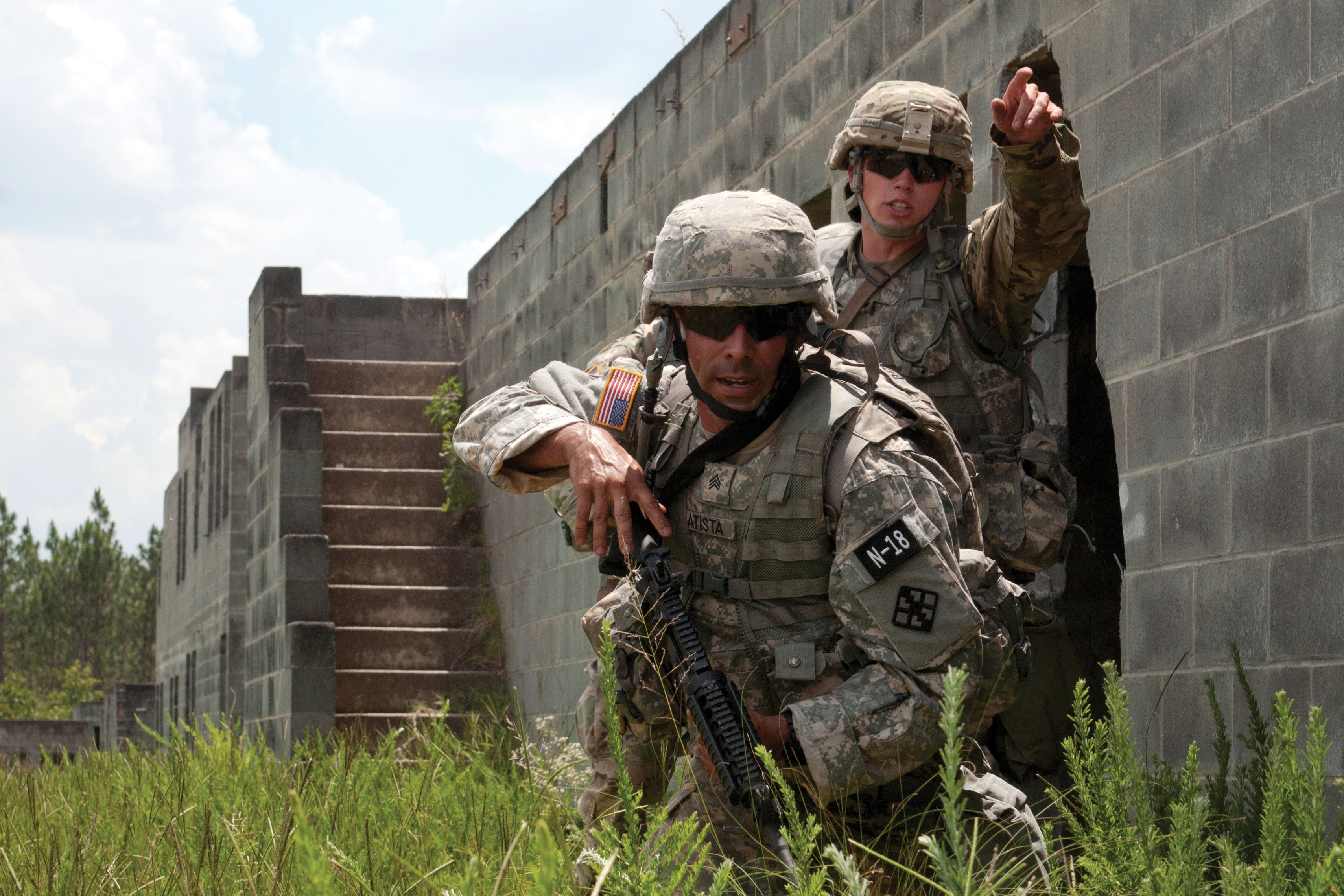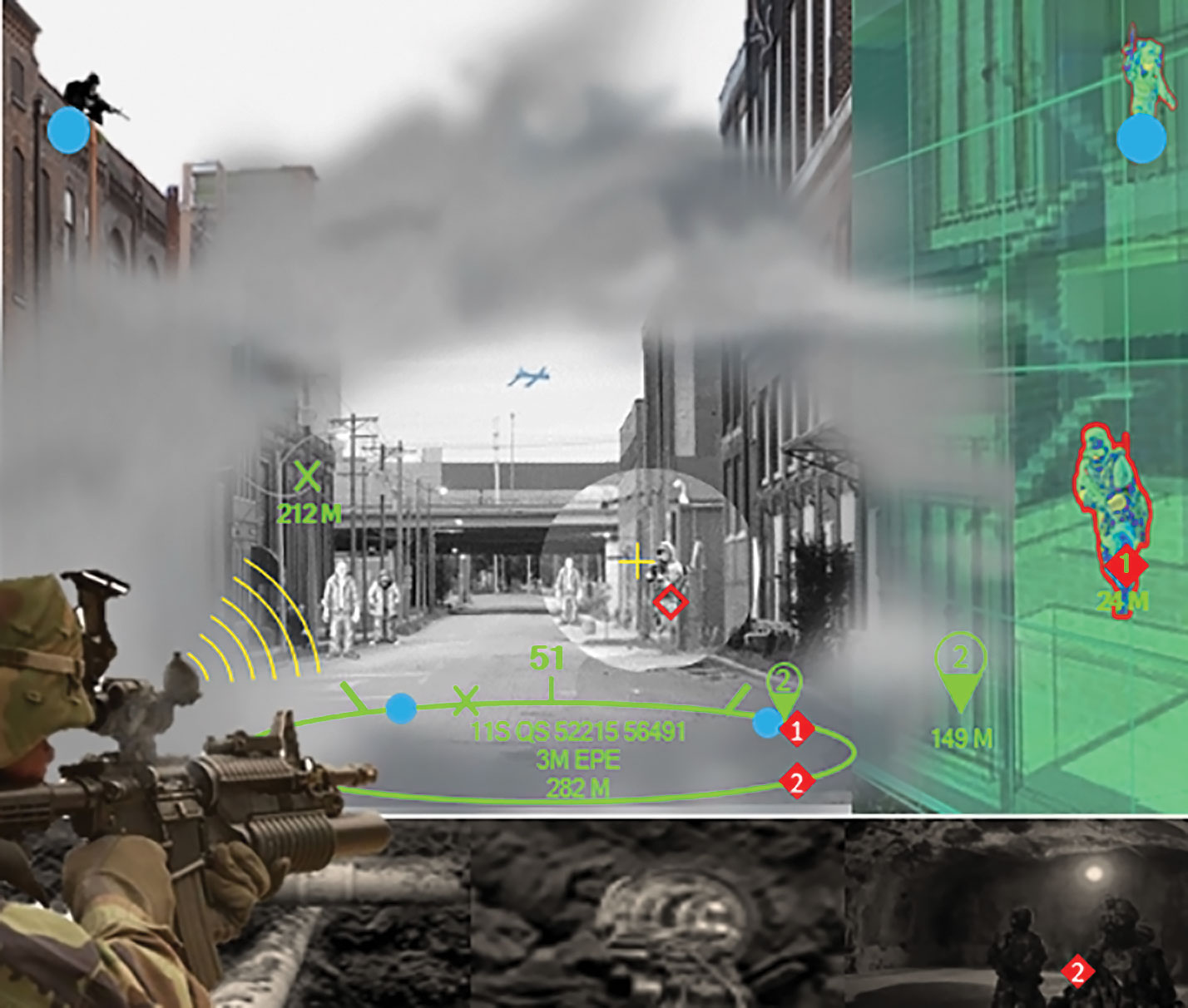
Or multiple sensors that work better together
by Dr. Richard Nabors, Dr. Donald A. Reago Jr. and Mr. Nathan Burkholder
War is the realm of uncertainty; three quarters of the factors on which action in war is based are wrapped in a fog of greater or lesser uncertainty,” wrote Carl von Clausewitz in his 1832 treatise “On War.” The dictum still holds for modern warfare. Confusion, chance, chaos and resistance are as much factors in modern warfare as they were in Napoleonic times. Weather and terrain, misunderstandings and inaccurate intelligence, a creative and adaptive enemy and a civilian population in the battleground are just a few of the contributors to the “fog of war” that have always challenged the warfighter.
However, modern warfare is becoming dramatically different from warfare in the past, with multiple, shifting players operating within complex, dynamic environments. At the Oct. 4, 2016, Association of the United States Army’s annual Eisenhower Luncheon, Gen. Mark A. Milley, Army chief of staff, warned that “we are on the cusp of a fundamental change in the character of ground warfare. Land-based forces now are going to have to penetrate denied areas to facilitate air and naval forces,” Milley said. “This is the exact opposite of what we have done for the last 70 years, where air and naval forces have enabled ground forces.” The nature, location or duration of the next conflict cannot be predicted accurately. With continually changing coalitions, alliances, partnerships and actors, the operational environment has become extremely multifaceted and fluid. No longer a battlefield, the complex operational environment has become a battlespace—jungle, forest, city, desert, arctic and cyber—where the enemy is already entrenched and knows the operational environment.

eyes up
Sgt. Luciano Batista, left, and Sgt. Michael Hughes react to a simulated attack at the 2017 U.S. Army Reserve Best Warrior Competition at Fort Bragg, North Carolina, in June. Several Army working groups are looking at ways to field better sensing technologies that will help Soldiers react faster and more accurately. (U.S. Army Reserve photo by Sgt. David Turner)
NECESSARY UPGRADES, TECHNICAL CHALLENGES
Military technology combined with superior training and the unmatched excellence of our Soldiers has given the U.S. military significant means of reducing the fog of war, leading to decades of overmatch. For example, the U.S. military’s ability to “own the night” through night-vision technologies has provided 40 years of military dominance over both near-peer and hybrid threats. The volatile and complex environments of tomorrow will require a move from owning the night to owning the environment. Improvements in sensing that extend beyond simple awareness of activities concealed by darkness is an imperative.
Complex and congested environments level the field between the United States and its adversaries by reducing standoff and line-of-sight advantages. Expected advances in Army sensing capabilities will directly address operational vulnerabilities in future environments, including intelligence, surveillance and reconnaissance (ISR) by a concealed enemy, and poor visibility and short lines of sight against positioned and moving threats in urban environments. These needed advances will buy back the field of view lost to clutter, and reinforce and expand small units’ ability to sense the adversary across modalities (maneuver, surveillance, targeting, engagement, etc.). They also will provide the small unit with an understanding of the operational environment that the adversary lacks. These sensors will provide local ISR by collecting, sorting and fusing real-time data and sending it to the point of need, significantly reducing the fog of war.
These changes will restore the military advantages that the United States has had in employing the movement and maneuver functions necessary for successful land warfare. If the United States is going to maintain its historic advantages, then it will need continued, sustained investments to nurture the technology development required to maintain overmatch capabilities. Some of the technical challenges we will need to address to secure this future include:
- Fusion of disparate sensors into a combined capability.
- Tactical computing resources.
- Network connectivity and bandwidth.
- Sensor suitability for environmental observation.
- Reduced power requirements.
- Tailored, individual mechanisms through “sensored” Soldiers.
- Disguised unmanned systems to gather and communicate intelligence.

THE FOG OF WAR
Soldiers assigned to 2nd Armored Brigade Combat Team, 1st Armored Division conduct sentry duty in August, during Decisive Action Rotation 17-08 at the National Training Center, Fort Irwin, California. The battlespace where modern wars will be fought layers new sources of uncertainty and confusion on top of the factors that already produce the fog of war. (U.S. Army photo by Spc. Dedrick Johnson, Fort Irwin Operations Group)
CONCLUSION
The Army has several groups working to identify and assess innovative concepts that could provide a significant advantage to U.S. forces and their partners in complex environments. Enhancing human vision beyond traditional night-vision technologies, integrating computers into sensing systems to detect and identify items of interest in real time, using augmented reality to overlay computer vision with human vision and fusing data together from multiple sensor sources to provide a comprehensive understanding, will allow Soldiers to make better, faster decisions while operating in complex environments against a resolute and adaptive enemy. Because network coverage in these future environments will be volatile and intermittent, it is important for these sensors to be able to work autonomously to support local operations as well as converge and diverge as needed.
Many science and technology (S&T) labs and centers within the Army, including the U.S. Army Communications-Electronics Research, Development and Engineering Center (CERDEC) and the U.S. Army Research Laboratory, are working on programs of significant impact in bringing needed sensing capabilities to our Soldiers. Army S&T is dedicated to investing heavily in technology areas that support our Soldiers’ constant situational understanding of the battlespace.

NEW ENVIRONMENT
Though the Army has fought in urban areas before, it’s not just the density of a city that challenges scientists designing the sensor equipment to help Soldiers navigate future operating environments. The electromagnetic spectrum, where communications and navigation information flow, is also more crowded, and jamming, denial and disinformation campaigns will clog and obscure the battlespace. (U.S. Army graphic by Sonya Beckett, CERDEC NVESD)
“On the future battlefield, if you stay in one place longer than two or three hours, you will be dead,” Gen. Milley said at the Eisenhower Luncheon. In the future, there will be no clear front line, no secure supply lines, no large bases. Small units will be on their own, far from friendly forces, in constant motion to avoid detection and targeting by enemy forces. The most valuable asset and advantage of the U.S. military, as Milley said, is that Americans are improvisers, innovators and problem-solvers with the initiative to act independently. Equipped with the best technology in sensing, weaponry and defense, Soldiers will be empowered to adapt to changes in real time in spite of a complex and congested operational environment. Continued technology improvements will ensure future success and overmatch.
The Army must be effective across the entire spectrum of conflict. To do so requires understanding the operational environment and how Soldiers and units accomplish missions. In complex environments, the gathering and fusion of information lead to greater understanding. Improved sensors, remote and near, manned and unmanned, can both save Soldiers’ lives and make them more lethal.
For more information or to contact the authors, go to www.cerdec.army.mil.
RICHARD NABORS is the associate director for strategic planning and deputy director of the Operations Division at the U.S. Army CERDEC Night Vision and Electronic Sensors Directorate (NVESD) at Fort Belvoir, Virginia. He holds a doctor of management in organizational leadership from the University of Phoenix, an M.S. in management from the Florida Institute of Technology and a B.A. in history from Old Dominion University. He is Level I certified in program management.
DONALD A. REAGO JR. is director of the U.S. Army CERDEC NVESD. He holds a Ph.D. and a B.S. in physics from the University of Missouri–Rolla. He is Level III certified in engineering and program management and is a member of the Army Acquisition Corps.
NATHAN BURKHOLDER is a strategic analyst for KITEWIRE Inc. who supports CERDEC NVESD. He holds a B.S. in engineering from Messiah College.
Related Link:
“Miserable, Disobedient & Victorious: Gen. Milley’s Future US Soldier,” Breaking Defense, Oct. 05, 2016: http://breakingdefense.com/2016/10/miserable-disobedient-victorious-gen-milleys-future-us-soldier/
This article is published in the January – March 2018 issue of Army AL&T magazine.
Subscribe to Army AL&T News, the premier online news source for the Acquisition, Logistics, and Technology (AL&T) Workforce.







